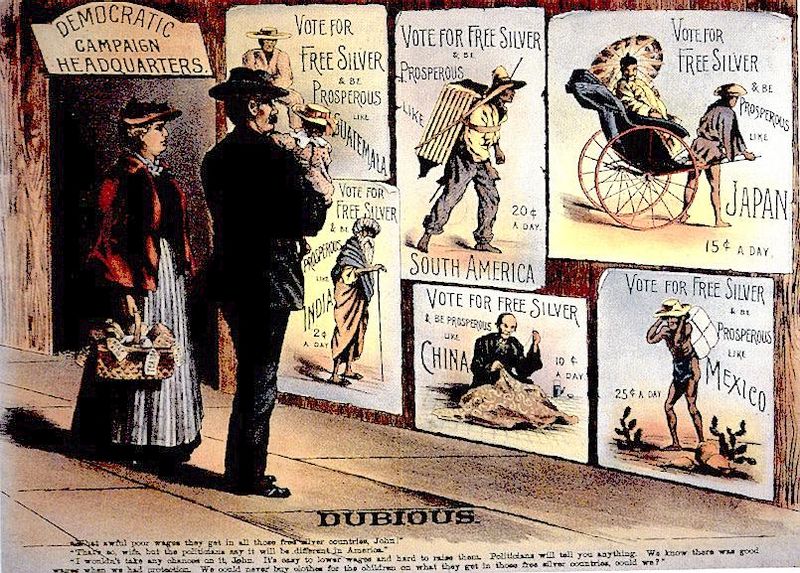
Bet you didn't learn about Free Silver in 9th Grade American History, now did you? But then you also probably didn't ever learn about William Jennings Bryan's Cross of Gold speech either, did you?
From Wikipedia:
Free Silver was an important United States political policy issue in the late 19th century and early 20th century. Its advocates were in favor of an inflationary monetary policy using the "free coinage of silver" as opposed to the less inflationary Gold Standard; its supporters were called "Silverites". It largely pitted the financial establishment of the Northeast, who were creditors and would be hurt by inflation, against the more rural areas of the country, who were less affluent and often debtors and would benefit from the lower prices and other perceived benefits of a silver based monetary supply: largely farmers in the Midwest and South, miners in the West, and citizens of farming and silver mining states. Southerners were still chafing against post-Civil War federal government policies and were, together with Midwestern farmers, locked in a bitter struggle with the railroad monopolies, banks, and commodity brokers whose practices kept the farmers deeply in debt while taking the bulk of the farmers' profits (see Farmers' Alliance and Populism).
The debate lasted from the Fourth Coinage Act (Coinage Act of 1873), which demonetized silver, called by opponents the "Crime of '73", until the Federal Reserve Act of 1913 which completely overhauled the US monetary system. However the Free Silver debate came to a head in the presidential election of 1896, most memorably in the Cross of Gold speech. Throughout, Free Silver was consistently defeated, largely due to the Republican Party's substantial fundraising advantage.
